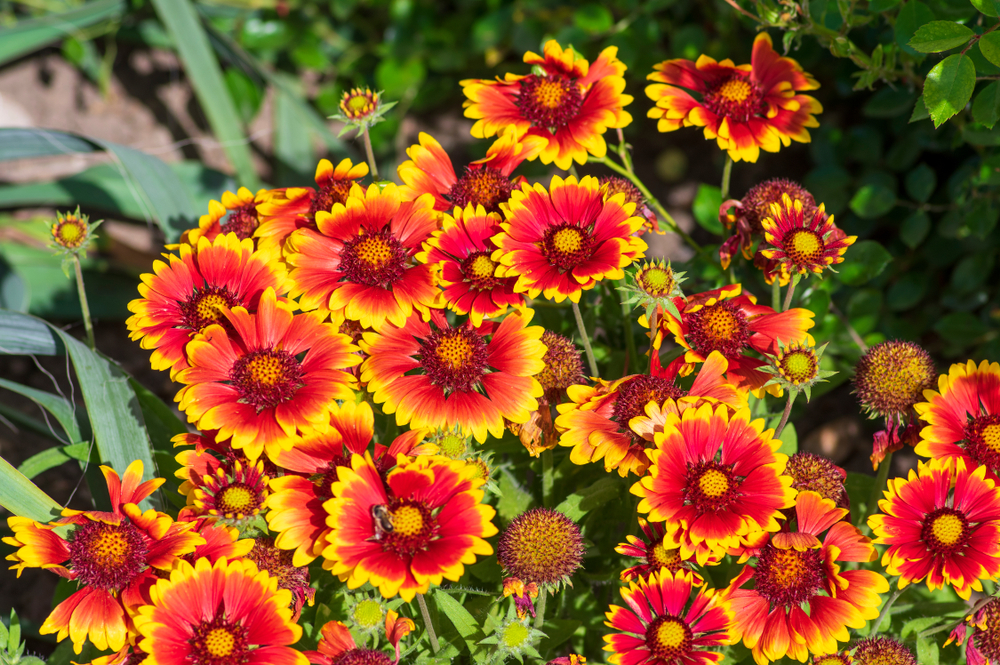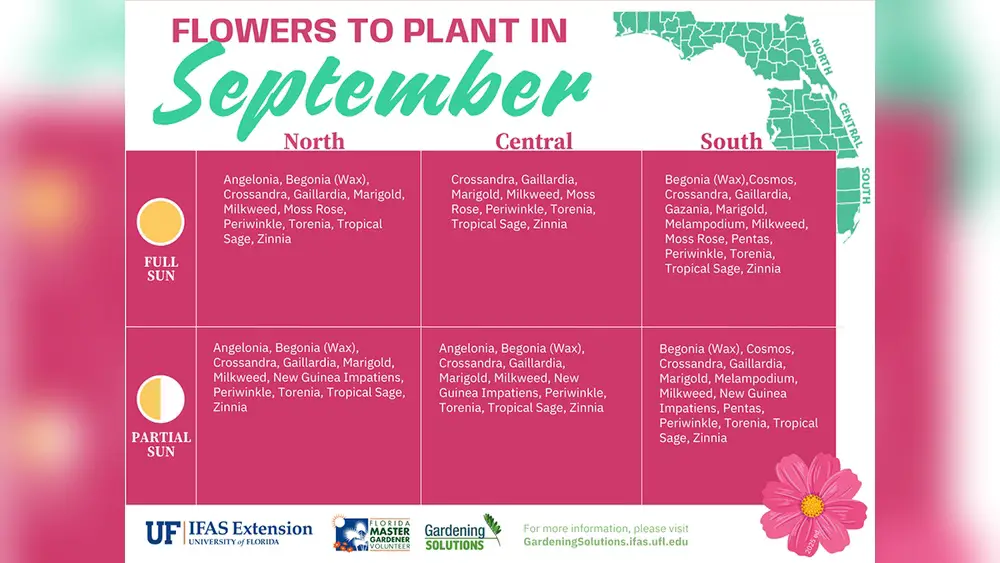If you live in Florida and want a thriving garden, September is the perfect month to get planting. The weather is shifting, giving you a unique chance to grow both warm-season favorites like tomatoes and peppers, and cool-season greens such as lettuce and broccoli.
But what exactly should you plant to make the most of this window? In this guide, you’ll discover the best plants to start now that will flourish in Florida’s climate. Whether you’re a seasoned gardener or just starting out, these tips will help you enjoy a vibrant, productive garden that keeps giving through the seasons.
Keep reading to find out which plants will turn your garden into a flourishing paradise this September!
Warm-season Crops
September is a great month to plant warm-season crops in Florida. These plants thrive in the state’s hot and humid climate. Starting them now helps you enjoy fresh vegetables before the cooler months arrive.
Warm-season crops need plenty of sunlight and warmth. Florida’s long growing season lets you harvest many times. Choosing the right plants ensures a healthy and productive garden.
Tomatoes And Peppers
Tomatoes and peppers grow well in Florida’s September heat. Pick disease-resistant varieties for better success. Plant seedlings in well-drained soil with plenty of organic matter. Water regularly but avoid overwatering to prevent root rot. These crops benefit from afternoon shade in the hottest areas.
Eggplants And Beans
Eggplants love warm weather and grow fast in Florida’s climate. Use mulch to keep soil moist and control weeds. Beans, including bush and pole types, do well this time of year. They fix nitrogen in the soil, improving garden health. Plant beans near corn or squash for natural support.
Cucumbers And Summer Squash
Cucumbers and summer squash thrive in warm temperatures and full sun. Plant seeds or seedlings directly into fertile soil. Keep soil evenly moist for best fruit development. These crops grow quickly and produce abundant harvests. Space plants properly to allow good air circulation and reduce disease.

Credit: fleetfarming.org
Cool-season Crops
September marks the start of cooler weather in Florida, ideal for planting cool-season crops. These plants thrive in milder temperatures and shorter days. They offer fresh, nutritious produce right through fall and winter. Gardeners can enjoy leafy greens, root vegetables, and other hardy plants this time of year.
Leafy Greens And Root Vegetables
Leafy greens like lettuce and spinach grow well in Florida’s cooler months. They prefer the gentle sun and crisp air. Root vegetables such as carrots and beets develop their sweetness in cool soil. These crops require loose, well-drained soil and regular watering for best growth. Planting them in September gives them enough time to mature before frost.
Brassicas And Alliums
Brassicas include broccoli, cauliflower, and cabbage. They grow steadily as temperatures drop. These vegetables need fertile soil and consistent moisture. Alliums such as onions and garlic also do well when planted in September. They benefit from cooler weather to develop strong bulbs. Both groups add variety and nutrition to the garden.
Strawberries And Other Picks
Strawberries planted in September establish roots before winter. This leads to a fruitful spring harvest. Other good options include celery and radishes. Celery thrives in cool, moist conditions. Radishes grow quickly and can be harvested within weeks. These plants add color and flavor to any garden.
Planting Tips For September
September marks a key time for gardeners in Florida. The weather starts to cool but the soil stays warm. This combination helps many plants thrive. Proper care and preparation are essential for success this month. Follow these simple planting tips to help your garden flourish.
Seed Starting And Transplanting
Start seeds indoors or in shaded areas to protect from strong sun. Use seed trays or small pots with quality seed-starting mix. Keep soil moist but not soggy for best germination. Transplant seedlings outdoors in the late afternoon or on cloudy days. This reduces transplant shock and heat stress. Harden off young plants by gradually exposing them to outdoor conditions over a week.
Protecting Plants From Heat
Florida’s September heat can still be intense. Use shade cloth or garden fabric to shield tender plants during peak sun hours. Mulch around plants to keep roots cool and retain moisture. Water early in the morning or late in the evening to minimize evaporation. Avoid overwatering, which can cause root problems. Choose heat-tolerant plant varieties for better survival.
Soil Preparation And Fertilization
Test your soil to check pH and nutrient levels before planting. Add organic matter like compost or aged manure to improve soil texture. Work the amendments into the top 6 inches of soil for better root growth. Use balanced fertilizers with nitrogen, phosphorus, and potassium to support healthy development. Follow package instructions carefully to avoid overfeeding. Well-prepared soil gives plants a strong start.

Credit: www.revivalgardening.com
Regional Planting Guide
Florida’s climate varies from north to south, affecting what plants thrive best. Understanding regional differences helps you choose the right plants. September is a key month for planting in many parts of Florida. This guide breaks down planting tips by region. Follow these to grow healthy plants suited for your area.
North And Central Florida
North and Central Florida experience cooler nights in September. Start planting cool-season vegetables like lettuce, broccoli, and carrots. Warm-season crops like tomatoes and peppers can still be planted early in the month. Beans and cucumbers also do well now. Use mulch to keep soil moist and protect roots from temperature swings.
South Florida
South Florida stays warm year-round, making it ideal for warm-season crops. Plant tomatoes, eggplants, and summer squash in September. Cool-season crops such as kale and cabbage can be started later. Make sure to water regularly to combat heat and humidity. Shade cloth helps protect young plants from intense sun.
Adjusting For Microclimates
Microclimates exist in every region due to elevation, shade, and wind. Urban areas often stay warmer than rural spots. Plant heat-loving crops in warmer microclimates. Use shade or windbreaks in cooler, exposed spots. Observe your garden’s conditions closely to adjust watering and planting times. This ensures plants grow strong despite local differences.
Garden Maintenance In September
September marks a key time for garden care in Florida. The weather starts to cool slightly, but humidity remains high. Plants need attention to thrive during this transition. Proper maintenance can improve plant health and boost yields. Focus on watering, pest control, and pruning to keep your garden in top shape.
Watering Strategies
September rains can be irregular in Florida. Water plants deeply but less often to encourage strong roots. Early morning watering helps reduce evaporation and fungal growth. Check soil moisture before watering to avoid overwatering. Use mulch to retain soil moisture and keep roots cool.
Pest And Disease Management
Warm and humid conditions invite pests and diseases. Inspect plants regularly for signs of damage or infestation. Use natural remedies or insecticidal soaps to control pests. Remove diseased leaves and debris to prevent spread. Rotate crops to reduce soil-borne diseases and maintain garden health.
Pruning And Harvesting
Pruning helps plants focus energy on fruit and flower production. Remove dead or damaged branches carefully. Harvest mature fruits and vegetables promptly to encourage new growth. Clean tools before and after pruning to avoid spreading disease. Regular harvesting keeps plants productive and healthy throughout the season.

Credit: keithslawncareocala.com
Frequently Asked Questions
What To Plant In Florida In September?
Plant warm-season crops like tomatoes, peppers, beans, cucumbers, and summer squash in Florida in September. Also, start cool-season vegetables such as lettuce, broccoli, carrots, kale, and onions for a successful garden. Use protected spaces to shield young plants from intense sun and heat.
What Is The 70/30 Rule In Gardening?
The 70/30 rule in gardening means planting 70% sun-loving plants and 30% shade-tolerant plants for balanced growth.
When Should I Start My Fall Garden In Florida?
Start your fall garden in Florida in August for North and Central regions. Begin warm-weather crops in early October. Plant cool-season vegetables like broccoli and lettuce in October. South Florida gardeners should plant warm-weather crops later due to higher temperatures.
Is September Too Late To Plant A Fall Garden?
September is not too late to plant a fall garden. Plant warm-season crops early and start cool-season vegetables by mid-September.
Conclusion
September offers a great chance to plant many vegetables in Florida. Warm crops like tomatoes and peppers thrive this month. Cool crops such as lettuce and broccoli also do well. Start seeds in shaded areas to protect from heat. A healthy garden needs regular watering and care.
Planting now helps you enjoy fresh produce soon. Your Florida garden will grow strong with these plants. Happy gardening and enjoy the fruits of your work!

